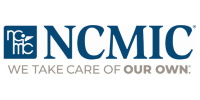Summary: Objective: The relationship between nonverbal behaviors and patient perceptions of clinicians has been underexplored. The aim of this study was to understand the relationship between nonverbal communication behaviors (eye contact and social touch) to patient assessments of clinician (empathy, connectedness, and liking). Methods: Hypotheses were tested including clinician and patient nonverbal behaviors (eye contact, social touch) were coded temporally in 110 videotaped clinical encounters. Patient participants completed questionnaires to measure their perception of clinician empathy, connectedness with clinician, and how much they liked their clinician. Results: Length of visit and eye contact between clinician and patient were positively related to the patient’s assessment of the clinician’s empathy. Eye contact was significantly related to patient perceptions of clinician attributes, such as connectedness and liking. Conclusion: Eye contact and social touch were significantly related to patient perceptions of clinician empathy. Future research in this area is warranted, particular with regards to health information technology and clinical system design. Practice Implications: Clinical environments designed for patient and clinician interaction should be designed to facilitate positive nonverbal interactions such as eye contact and social touch. Specifically, health information technology should not restrict clinicians’ ability to make eye contact with their patients.
Keywords: Clinician-patient interaction, communication, relationship, empathy, nonverbal behavior.
Citation: Montague E, Chen P, Xu J, Chewning B, Barrett B. Nonverbal interpersonal interactions in clinical encounters and patient perceptions of empathy. J Participat Med. 2013 Aug 14; 5:e33.
Published: August 14, 2013.
Competing Interests: The authors have declared that no competing interests exist.
Source




